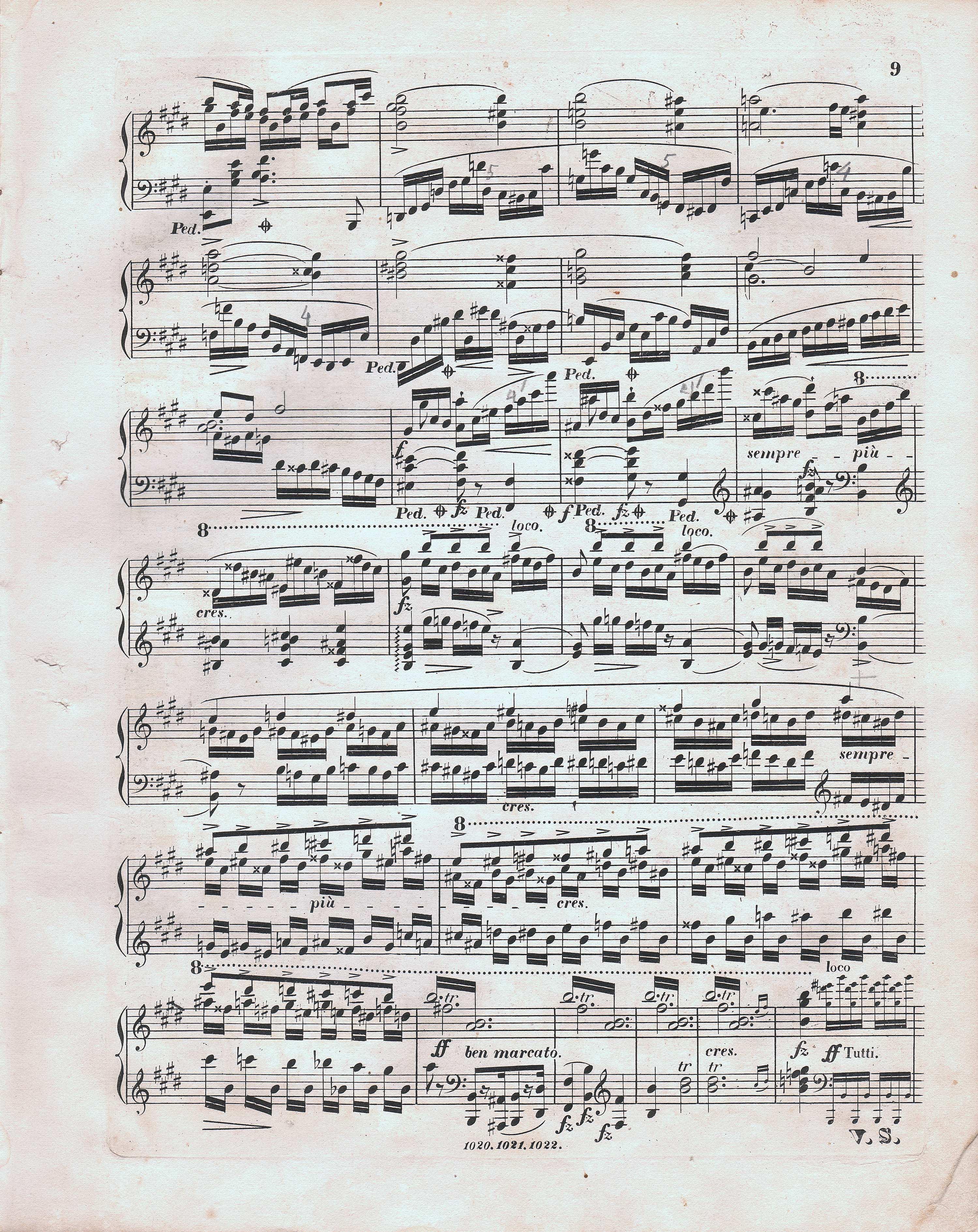



In the places where FEH and EE give fingering for the same notes, the indications are totally compliant, which results from the consistent use of the 1st finger on a white and 2nd finger on a black key on the 1st note of each group of semiquavers. However, according to us, it does not mean that the fingering is identical, since Fontana copies the fingers 3-4 for the middle semiquavers of each group, whereas in FEH, the notes are devoid of indications (with one exception), which suggests the use of subsequent fingers, hence 2-3 after the 1st finger and 3-4 after the 2nd one. This conclusion is confirmed by the aforementioned exception – the 4th finger on a in bar 323 naturally stems from the 2nd finger marked on the initial c
in bar 323 naturally stems from the 2nd finger marked on the initial c 1; indicating it in this place most probably means that it was another finger that played the 3rd semiquaver of the group, i.e. the 3rd one.
1; indicating it in this place most probably means that it was another finger that played the 3rd semiquaver of the group, i.e. the 3rd one.
Compare the passage in the sources »
category imprint: Differences between sources
issues: Annotations in teaching copies, EE revisions, Differences in fingering, Annotations in FEH
notation: Fingering




